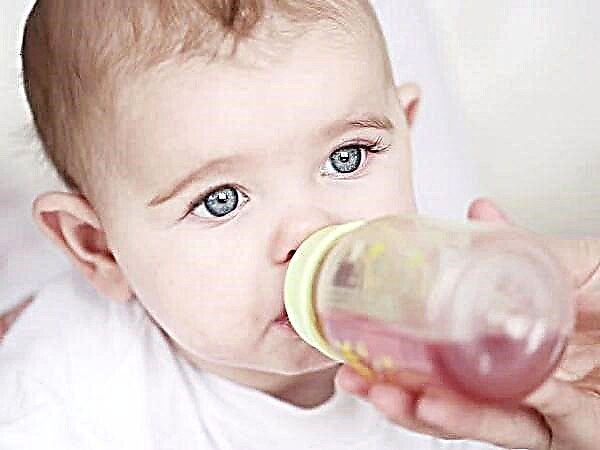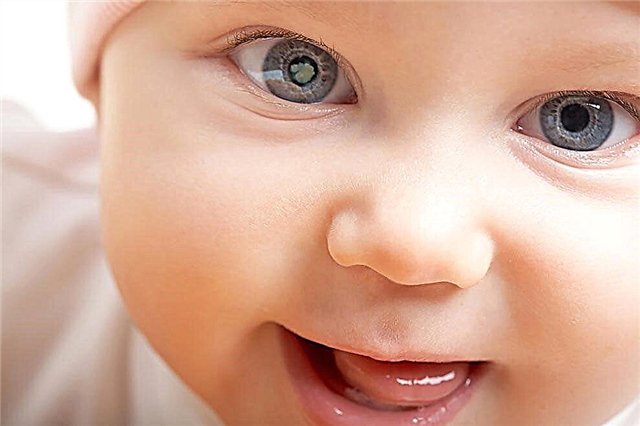Is it worth teaching a child to dummy: pros and cons
The sucking reflex is an essential skill that a child needs to survive as it provides nutrition and to establish a strong psycho-emotional connection with the mother.
 If a child is breastfed and sucks on her mother's breast at the first request, then the sucking instinct is completely satisfied, so he does not need a pacifier. In addition, many natural scientists themselves begin to abandon this adaptation.
If a child is breastfed and sucks on her mother's breast at the first request, then the sucking instinct is completely satisfied, so he does not need a pacifier. In addition, many natural scientists themselves begin to abandon this adaptation.
Another thing is a baby on artificial feeding or a baby who receives mother's milk by the hour. These babies need a pacifier because their need to suckle at the breast is partially or not met.
Separate physiological experiments have shown that when weaned from the mother's breast, the heart rate of babies begins to increase. But if at this moment you offer them a nipple, then the contractions of the heart will gradually normalize. This is because the dummy relieves stress and suppresses negative emotions.
Thus, experts, answering the question of why it is generally necessary to use a pacifier, give the main argument - the child calms down and quickly falls asleep due to the complete satisfaction of the sucking reflex.
Pros of using a nipple
Stimulating vital unconditioned reflexive behavior are not the only benefits of using the nipple. According to the beliefs of some experts, a dummy can perform several useful functions, among which they are especially distinguished:
- help in the prevention of colds during the cold season;
- regulation of the feeding schedule;
- prevention of thumb sucking;
- falling asleep as soon as possible and lengthening restful sleep;
- reduction of pain during teething;
- prevention of sudden death syndrome in children due to the fact that the tongue does not sink;
- reduction of negative sensations in painful conditions;
- stimulation of the release of gases from the gastrointestinal tract, which allows you to relieve the child of colic;
- improved bite when choosing a special orthodontic attachment.
Many parents note that the use of this hygienic device allows you not to worry about the fact that a baby who has learned to walk will pick up various dirty objects in the sandbox or just outside and pull them into his mouth.
Cons of using a pacifier
It is possible to accustom a baby to a nipple, but many experts argue against this process, since the benefits of sucking can be overridden by negative consequences.

Experts refer to the negative aspects of using pacifiers the following aspects:
- incorrect selection of the nipple is fraught with the occurrence of an incorrect bite;
- sucking on a hygienic device can provoke the baby's refusal to breastfeed, which ultimately will result in the transition to mixed or artificial feeding;
- a child who is accustomed to a nipple is more likely to contract infectious diseases of the mouth;
- the formation of the habit of sucking the nipple, as a result of which parents have to wean from the pacifier;
- gripping the pacifier with the lips differs from sucking the breast, as a result of which the mother may feel unpleasant sensations when feeding the baby;
- inhibits the development of the child, the child's interest in the world around him decreases.
The question of whether it is necessary to accustom the child to a dummy is decided exclusively by the parents, based on the recommendations of the pediatrician. A thoughtful and balanced decision will allow you to avoid the above negative consequences.
The opinion of Dr. Komarovsky
Teledoctor E.O. Komarovsky, widely known and respected by mothers, is convinced that the positive and negative properties of pacifiers are overly exaggerated. The main principle of their use, according to the pediatrician, is the mandatory observance of hygienic requirements.
However, Komarovsky does not recommend teaching a child to a nipple if a woman has certain problems with the volume of milk secretion. The baby, being distracted by a pacifier, will less intensely affect the mother's nipples, which is fraught with oppression of lactation.
But another situation should be taken into account - when the child literally hangs on his mother's breast, trying to realize his sucking reflex. In this case, the dummy will allow the mother to free up some time and provide peace of mind in the house.
Optimal age for training
Another frequent question that mothers ask themselves and their specialists concerns at what age a baby can be given a pacifier. The answer will again depend on the type of feeding.
So, if a child is fed with mixtures from the first days of life, then you will have to use a pacifier literally from birth. The point here is that the artificial person takes food from the bottle much faster than the baby on natural feeding. As a result, the sucking reflex cannot be fully realized.

For a newborn who feeds on mother's milk, this problem is not typical. Therefore, a woman should not rush to insert the nipple. If there is a need for it, then you can give a dummy to a baby at 1 month of age, but not earlier than 3 to 4 weeks of age.
A newborn child must master the method of "extraction" of milk from mother's breast. This usually occurs as early as 1 week of life, however, excessive haste with a dummy can interfere with the establishment of lactation, which threatens the baby's refusal to breastfeed.
A special case is a premature baby with a poorly developed sucking reflex. In this case, many pediatricians even advise giving the baby a pacifier so that with its help he learns to suck correctly. In such a situation, the device should be selected especially carefully.
Types of nipples for babies
Modern manufacturers produce different types of pacifiers. They are distinguished by material and shape. These criteria are very important, as some babies often spit out contraptions just because they don't resemble Mom's nipples. Let's consider the types of pacifiers in more detail.
By the shape of the sucking part
According to this criterion, experts distinguish several basic types of pacifiers:
- Classic nipples. The standard version of the pacifier, the main feature of which is the small round nipple. This reminds the child of the mother's breast, which makes it easier to accustom him to a dummy.
- Anatomical nipples. The part captured by the baby is oblong and slightly flattened. This allows you to evenly distribute the pressure on the palatine part of the mouth. You can choose such a pacifier depending on the age of the child.
- Orthodontic nipples. These devices are drop-shaped. They were invented not so long ago, but they have already become popular among parents. The special structure allows you to reduce the likelihood of changing the shape of the teeth and even form the correct bite in the baby.
By material
Today, two materials are increasingly used in the manufacture of pacifiers: silicone and latex. Each of them has its own characteristics, which should be considered in more detail.
| Material | Dummy features | Usage tips |
|---|---|---|
| Latex |
| Latex pacifiers are recommended for newborns, premature or weak babies. |
| Silicone |
| Silicone pacifiers are stiff enough, so milk teeth may not grow properly. This nuance must be taken into account when choosing a device. |
Based on parental reviews, silicone products are considered safer in terms of allergic conditions. The fact is that natural latex contains many protein elements, which lead to hypersensitivity reactions.
Another option is rubber products, which are gradually becoming a thing of the past. But such nipples will help in an important period when a child's teeth are teething. Rubber pacifiers can withstand baby bites, boiling and other negative factors.
How to choose the right nipple?
Teaching a baby to a nipple can be significantly delayed or even unsuccessful if you choose the wrong product. To find the best option, you should consider factors such as:
- baby's age;
- the shape of the nipple;
- solidity of the device;
- material;
- company manufacturer.
 When choosing a sucking device, you should carefully study the age markings. In pharmacy chains and children's stores, pacifiers are sold for newborns (up to 3 months), for babies (from 3 to 6 months) and older children (from six months).
When choosing a sucking device, you should carefully study the age markings. In pharmacy chains and children's stores, pacifiers are sold for newborns (up to 3 months), for babies (from 3 to 6 months) and older children (from six months).
You need to make sure that the flap of the product is wide and equipped with special notches for the spout.
This will prevent the device from being swallowed and keep the baby comfortable while sucking. Extra holes in the base of the nipple can make breathing easier.
The relief of the base prevents the accumulation of saliva under the scutellum and the appearance of a rash on the skin. This will allow the baby to be accustomed to a hygienic device more quickly, since uncomfortable sensations are excluded.
Purchase several modifications of the nipple from various manufacturers for your baby at once. This will enable the child to choose the most suitable device for himself, which most fully takes into account all children's characteristics.
How to teach a child to dummy?
Teaching an artificial baby to a nipple is quite easy, since such a baby has already become familiar with the bottle. But to accustom a baby that is breastfed is much more difficult. Useful recommendations will help facilitate this process:
- Try offering your baby the pacifier in the same position as you are used to breastfeeding.
- You can give a dummy at a time when the baby is already full, but not satisfied with the sucking reflex.
- Many parents advise lubricating the nipple with breast milk or formula. The familiar taste and smell will make it easier for your baby to get used to the device.
- The first nipple experiment can be timed to coincide with the teething time. In this case, a rubber product is more suitable.
- To get the child used to the pacifier, use a bottle of water for drinking. Change the container to a regular teat after drinking.
- If your baby needs a breast for comfort and not because of hunger, try offering a pacifier every time. However, you should not leave it in your mouth for a long time so that a persistent habit does not form.
On the Internet, there is a recommendation to lubricate pacifiers with honey or jam. However, this method is quite dangerous, as these products can cause a serious allergic reaction.
Helpful hints
In addition to the criteria for making the right choice, parents need to know how to give their child this hygiene device. A reasonable approach will eliminate the likelihood of undesirable consequences:
- before the first acquaintance of the baby with the device, it is imperative to boil (sterilize) the dummy. This will eliminate the development of infectious diseases of the oral cavity;
- after 4 - 6 weeks of operation, the old device must be replaced with a new one. If the pacifier is made of latex, it needs to be changed more often;
- For safe use of the nipple, you should purchase a special case. A child should not put a pacifier on a baby's neck by tying the device with a ribbon or elastic band;
- do not lick the pacifier before giving it to your child. The saliva of adults contains microorganisms that can harm the child's body.
If the child refused to take the pacifier, one should not despair or insist. After a while, the procedure is usually repeated, while it is better to offer a new pacifier each time. If the baby refuses for several months, you should just accept the child's choice.
The problem of how to accustom a child to a dummy is not worth the mother's or children's nerves. It is important to monitor the baby's reaction and understand when he is capricious, and when he requires more communication with his mother. Thus, the dummy is just a maternal helper, and not an alternative to parental affection and tenderness.



